Southwest Michigan field crops update – Aug. 12, 2021
Hot, humid weather and plentiful rainfall give way to cooler and drier weather beginning this weekend. Don’t let the soybean scouting sweet spot pass you by without evaluating your fields.

Weather
Temperatures in south-central and southwest Michigan started last week cooler than normal, but with the tropical airmass that brought hot and humid air, we ended up being warmer than normal by 2-3 degrees. That air mass will be (thankfully) leaving our area on Friday when we will see cooler and drier conditions ushering in a beautiful weekend and pleasant conditions into next week. Humidity levels are predicted to increase toward the middle of next week, but temperatures should remain at or slightly below normal.
We picked up 172 growing degree days (GDD) base 50 this past week (242 base 40 for alfalfa) and are expecting an additional 150 GDD base 50, or 220 base 40, this coming week. The forecasted reference evapotranspiration is predicted to be slightly above normal with 1.15-1.25 inches for the coming week. Both the 6-10 and 8-14 day outlooks call for above-normal temperatures.
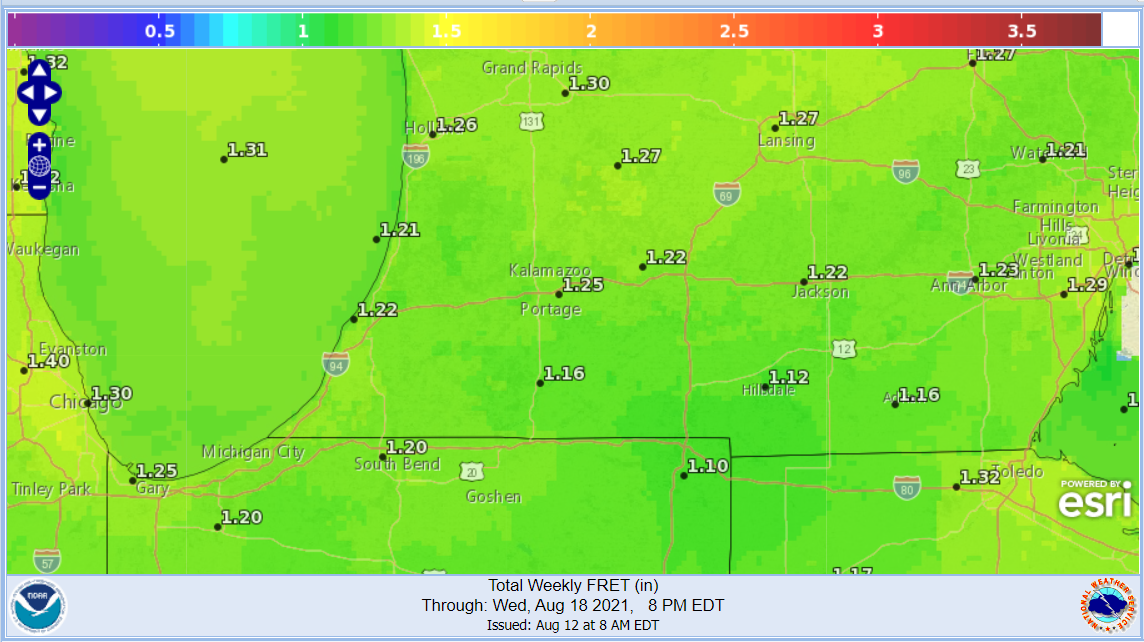
Rainfall this past week has been normal to well-above normal for the region. The National Weather Service maps show a definite gradient radiating from the extreme southwest corner outward. Note: These charts lag behind by about a day so they do not reflect rainfall received since 8 a.m. on Wednesday, Aug. 11. Totals measured at Michigan State University Enviroweather sites ranged from 1–5 inches as of Thursday, Aug. 12, at 8 a.m. with 24-hour totals ranging from 3-hundredths up to 2.18 inches.
On the MSU Extension Field Crops Virtual Breakfast this morning, agriculture climatologist Jeff Andresen shared a graphic depicting 24-hour rainfall totals for portions of east-central Michigan that experienced a 100-year rainfall event—even more rare if you take into account that essentially all of the rain fell within a 6-hour window. The map clipped off the southern tier of counties, but you can see that a few isolated areas received 4 inches or more. With high winds and torrential downbursts, power outages are affecting more than 240,000 people in Michigan according to Consumers Energy.
The forecast for the coming week calls for less than 0.5 inch with essentially all of that coming by the end of the day Friday and little to no chance of rain until at least the middle of next week. The 6-10 day outlook calls for below-normal precipitation while the 8-14 day gives no guidance.

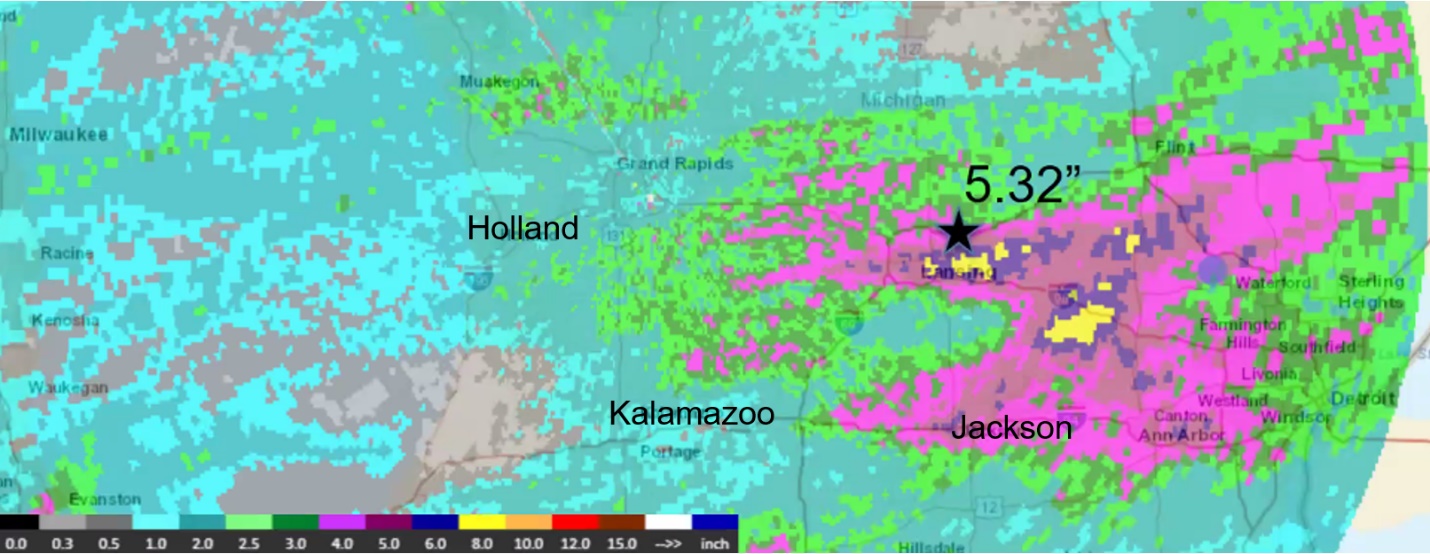
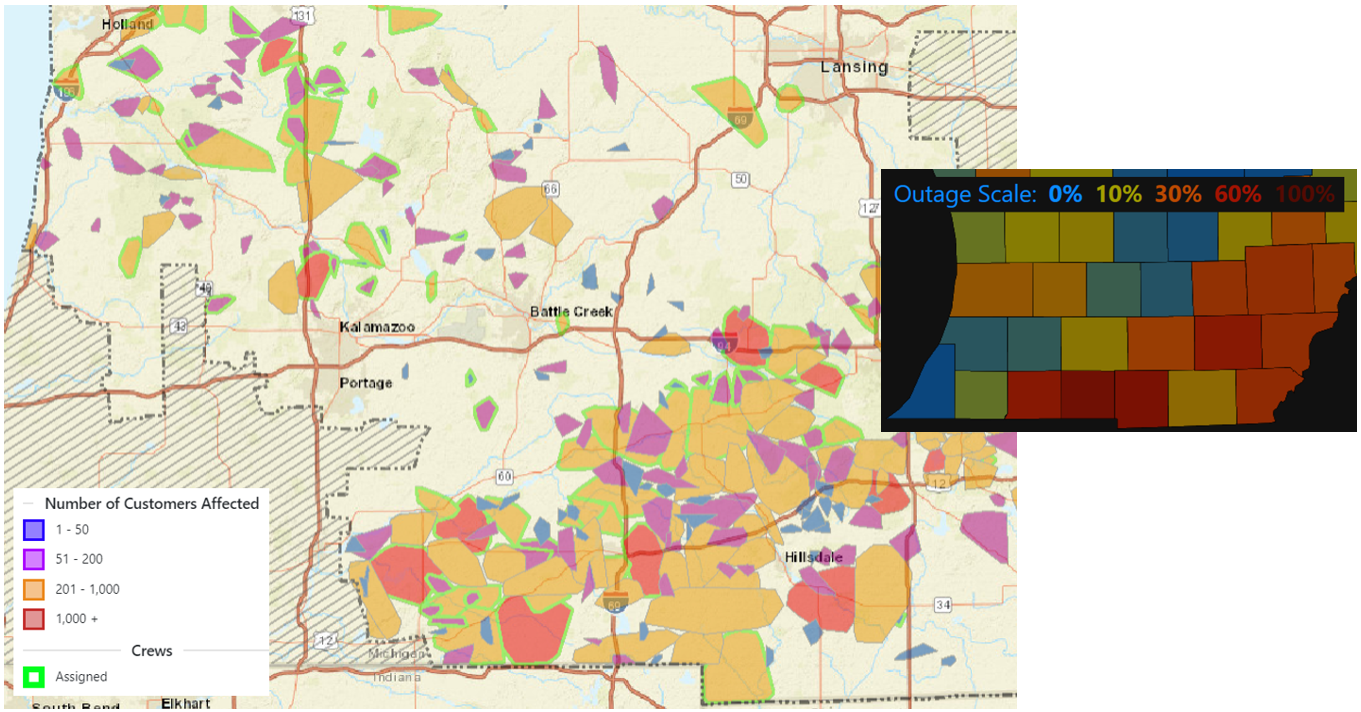
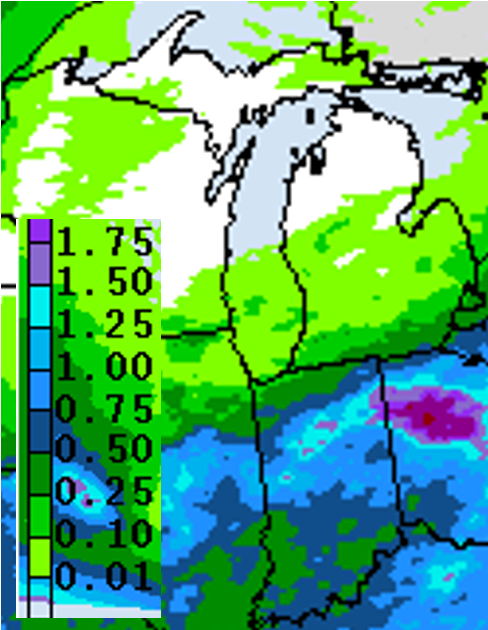

Crops and pests
Corn in the region is mostly in mid- to late-milk stage (R3) with earlier-planted fields in the dough stage (R4) while soybean ranges from beginning seed (R5, 0.125-inch long seed in the pod at one of the four uppermost nodes on the main stem) to full seed (R6, pod containing a green seed that fills the pod capacity at one of the four uppermost nodes on the main stem). Both crops continue to look very healthy and will require roughly 1.4–1.5 inches of water this coming week.
On the Michigan State University Extension Field Crops Virtual Breakfast this week, forage Extension specialist Kim Cassida addressed late-season alfalfa management considerations. The main topic: to cut or not to cut. Several factors come into play, including the variety’s fall dormancy rating (should be between 3 and 5) and winter survival ratings (1 or 2). Consider skipping the fall cutting if the previous one was 28 days or less prior to fall.
The key is to give the crop enough time to regrow and build up overwintering reserves. Approximately 500 GDD (base 40) are generally required after fall cutting which takes roughly six weeks to accumulate before a killing frost. The median first freeze dates are highly varied in Michigan owing to the many microclimates caused by the Great Lakes, but we generally see 28 degrees Fahrenheit sometime in the last week of October or first week of November depending on how close to Lake Michigan you are.
Counting backwards would mean the last cutting should be no later than mid- to late-September on average. Although some species like birdsfoot trefoil may need even more time and grass hay species may need slightly less time, using the six-week rule of thumb is a good practice. Cassida said that cutting too late may decrease the first-cutting yield the following spring, and since one-third of the annual yield is typically harvested in first cutting in our region, it may not be worth the risk in getting a final fall cutting which tends to yield the lowest of all timings.
Cassida also said fall is an ideal time to check soil fertility and make adjustments if needed. Lime can react over winter, and since it typically takes six months or more for lime to make the desired pH adjustment, fall is a good time to lime if needed. She also stressed that ensuring the crop has enough phosphorus and potassium, especially potassium, heading into winter is critical to maintaining yield and stand longevity.
If the alfalfa stand has reached the end of its economic lifespan (less than 40 stems per square foot is a good benchmark), and you do not plan to rotate to another crop right away, fall is a good time to terminate the current crop. Use the full rate of the chosen herbicide as alfalfa can be difficult to kill and be sure air temperatures are at least 50 degrees for three to four days following spraying to ensure good control. Terminating in the fall will also allow the allelopathic chemicals (causing alfalfa autotoxicity) time to dissipate and break down in the soil. When seeding a new stand in the fall, the same 500 GDD (base 40), or six weeks, is needed before a killing frost to get good establishment.
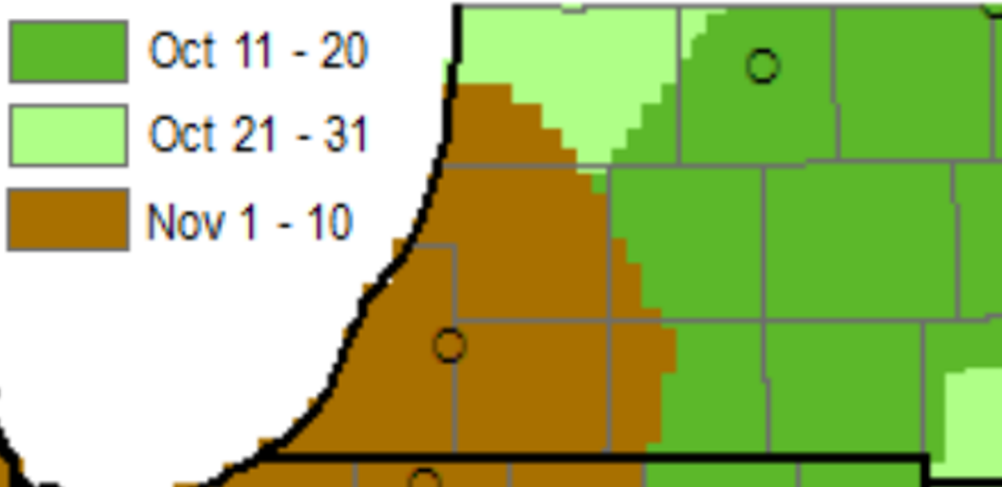
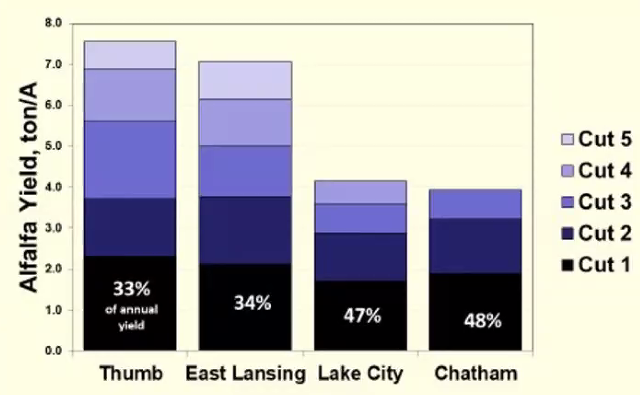
Western bean cutworm moth trapping has now ended for the season. The peak flight was the week of July 13-20 with heavy “shoulder” flight activity the week before and after that. See last week’s regional report for more information about scouting and control options.
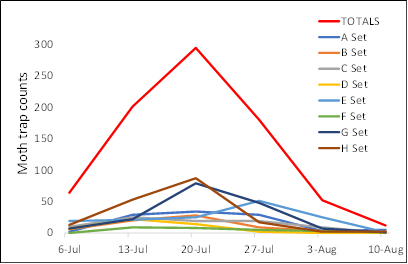
Diseases
Tar spot lesions are on increasing, likely exacerbated by the humid weather and plentiful rainfall of late. So far, most lesions remain low in the canopy with only a “sprinkling” on upper leaves. Severity has been highly variable from field to field, so be sure to hop out of the truck and walk a ways into your fields and do some scouting. We are past the window for optimum fungicide application timing (VT-R1, maybe as late as R3) but knowing the disease severity in your fields may help in knowing when to time harvest to avoid potential lodging issues.
Warm and wet conditions also favor other diseases such as northern corn leaf blight and gray leaf spot in corn and white mold, frogeye leaf spot, Cercospora leaf blight and several others in soybean. The cool, dry weather coming up will give you a good opportunity to scout.
Focus on management
As with most important events in life (and especially on the farm), great opportunities are generally available on a limited-time-offer basis. Each year, we get a chance to look at our soybean fields in a quick and easy way to get an overview of the level of stress that the plants were under during the growing season. This occurs at the time that the plants start to mature and are getting ready to lose their color. While this outwardly would appear to be a bit of a yawner in terms of an event, the timing of when different areas of the field begin to change colors can be very helpful in determining areas that have undergone some sort of a stress during the growing season. Areas that change color a week or more ahead of the rest of the field should pique your interest in determining why this has happened.
Sometimes these differentials in color can be easily explained. On rolling fields, areas of slope often have less available soil moisture due to runoff from heavy rainfall events. Some “receiving” areas tend to have too much water. Some fields have widely varying soil types, which hold differing amounts of water. These are all explainable, and so these areas can be easily dismissed from further investigation.
Occasionally though, you can find areas of fields that show up that cannot be so easily brushed aside. These are the most important locations to identify and scout for reasons why the color is different. Problems that can be associated with these kinds of areas are often related to pests and diseases such as soybean cyst nematodes, sudden death syndrome, root rots, white mold, spider mites, soybean aphids, or underlying fertility issues related to the soil type. While some of these things are harder to determine than others this late in the season, doing a little sleuthing can pay big dividends for future management.
Be prepared to take soil samples from impacted and adjacent non-impacted areas when you are out in the fields. If you suspect that soybean cyst nematote is partially the cause, be sure to examine the roots of the plants to look for cysts. Be sure to take something to dig with to allow for root removal without significant disruption of the tissue. You can either take soil core samples through the root mass now or note the area and come back and sample after harvest. If you find plants that were stunted, show signs of feeding, or are malformed, take good pictures on the cell phone and consider sending in some samples to try to figure out a potential cause. Patterns of discoloration can also be very helpful in determining causes.
While it is often no fun trekking out to the far reaches of soybean fields this time of year, identifying the causes of soybean stress can help you to identify problems that could potentially be spread across your farm’s fields through tillage and harvest operations. Taking a bit of time during this brief period—a couple weeks before the leaves begin to turn—to observe early coloration changes can help you to focus on areas to investigate for problems. Understanding what is changing in your fields is the first step to be able to manage them better.
Irrigation
Join us for the next MSU Irrigation Webinar on Aug. 18 where the topics of irrigation management efficiency as well as irrigating vegetable, tree fruit and ornamental crops will be discussed. Cost is free. Register online to receive the link which will be used for all episodes in the series that air every other Wednesday through Sept. 15.



 Print
Print Email
Email